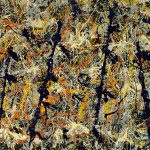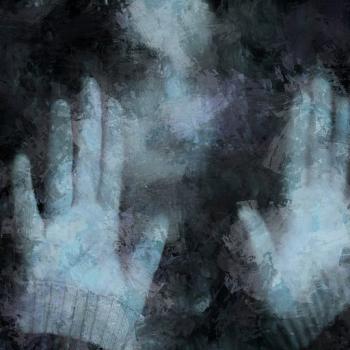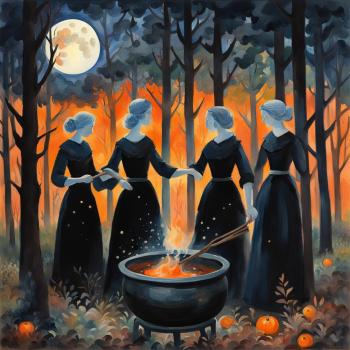They say you shouldn’t eat any berries left after Samhain, because they belong to the Púca – well, as I heard it you shouldn’t eat them because he claims them by urinating on them, although other people say he spits on them instead or otherwise fouls them. In the same way, the last sheaf in a field after the harvest should be left for the Cailleach or kept in her honor. The spirits deserve their due, after all, and we are moving solidly into their season: the dark part of the year. Some spirits in particular were associated with Samhain, and with the ensuing month, which in Irish is named for the holiday¹, and I thought it might be fun to discuss them a bit here.
The Puca – W. B. Yeats relates several stories of the Púca in his book Folk and Fairytales of the Irish Peasantry and he mentions the belief that Samhain and November where seen as the special time of the Púca. These shapeshifting Fey could appear as human-seeming or in the form of eagles, bats, bulls, or goats, but perhaps they were best known for taking the shape of horses. In this form they might help with work around a farm or they might trick someone into riding them only to take off on a wild run and dump the person – eventually – in a ditch. Púca fall onto the more generally benevolent end of the scale as these things go, known to help as often as hurt, but they did have a somewhat darker reputation as well and the Irish name for the spirit, Púca, was related to a Middle English nickname for the Devil, ‘Puca’.
Nicnevin – honored on the old dating of Samhain, November 11th, Nicnevin is said to be both the name of a famous witch and of the Queen of the Scottish fairies or of the Unseelie Court. The Unseelie Court, for those who may not be familiar with the term, were those Fair Folk who were considered most likely to cause harm to people without reason. Nicnevin was a Queen of Fairy and was said to be worshiped by witches, placing her on the fine line between deity and not-deity. She was said to be a skilled witch, called “Mother Nicnevin” and “the very Hecate of Scottish superstition”, with references to her going back to at least the 16th century². On Samhain, or perhaps the older date of November 11th, she would ride out either at the head of a great Fairy Rade or leading the Wild Hunt and the time of year in general was strongly connected to her.
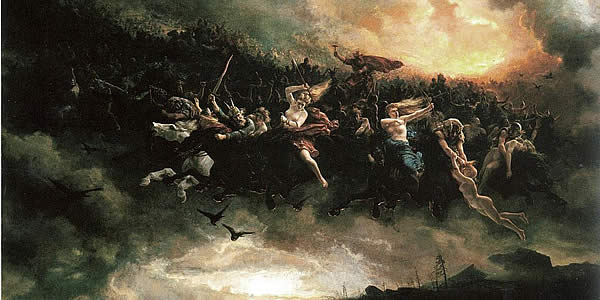
The Wild Hunt – although best known for riding during the 12 days of Yule the Wild Hunt can be found at other times of year and I personally tend to find they start riding around Samhain and continue then into the darkness of winter. The Wild Hunt is less one specific thing as a a kind of thing, ghostly riders who travel through the skies with hounds and horses – in some versions they are fairies, in some spirits of the dead, and in some Gods and heroes. In the same ways they are known by a variety of names: the Ghost Riders, the Gabriel Hounds, the Furious Host, or Herla’s Assembly among others. It is said you know that the Hunt is around when you hear the sound of horses and dogs carried on the wind, although none can be seen. They are generally considered dangerous although they can reward the brave few who earn their respect.
Trows – although, like the Wild Hunt, Trows are more associated with Yule time in the Shetland Isles it was said that on Samhain people might see ferns – called ‘ferry cairds’ [fairy cards] – being parted as the Trows went out on their nightly travels. Trows are strongly associated with the dead, and in Orkney folklore they are sometimes conflated with spirits of the dead, although they are also considered fairies. Trows are nocturnal by nature and are prone to wandering from their hills at night and get into the same sorts of things as many others kinds of fairies, causing both minor mischief and outright damage. Like other fairies they will steal new mothers and babies and may take livestock, and could be warded against with steel or iron.
Samhain is a time when the year turns from the light half of summer to the dark half of winter and in the same way it is the time when the darker spirits hold sway. Although we should not forget that the spirits of summer and the light half also have their dangers and deserve our respect, nor that the dark half can hold its blessings and friendly beings, this is a time when survival is less assured and the harshness of the weather and long dark hours of night can be reflected in the prevailing temperament of the Otherworldly beings who are abroad. So don’t forget to leave those last few berries on the bushes after Samhain to give the Púca his share, or to find shelter when the sound of horses and hounds carries on the wind. This is the time of the Dark spirits, and they deserve their due as much as the Light.
Endnotes:
- Mí na Samhna, literally ‘month of Samhain’, is the name of November (back)
- Quotes from the Dictionary of the Scots Language Nicnevin entry (back)
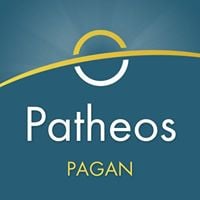
Patheos Pagan on Facebook.
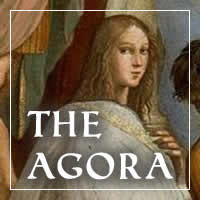
the Agora on Facebook
Irish-American Witchcraft is published bi-monthly on Tuesdays here on the Agora. Subscribe via RSS or e-mail!
Please use the links to the right to keep on top of activities here on the Agora as well as across the entire Patheos Pagan channel.



